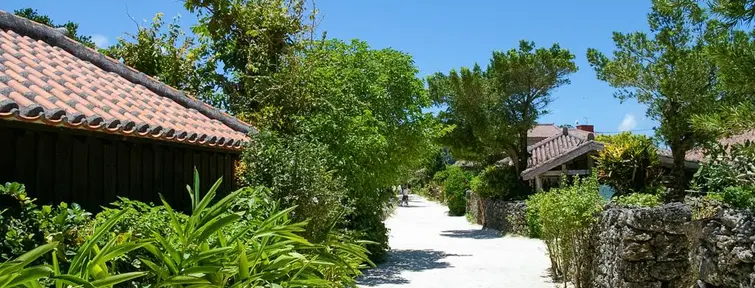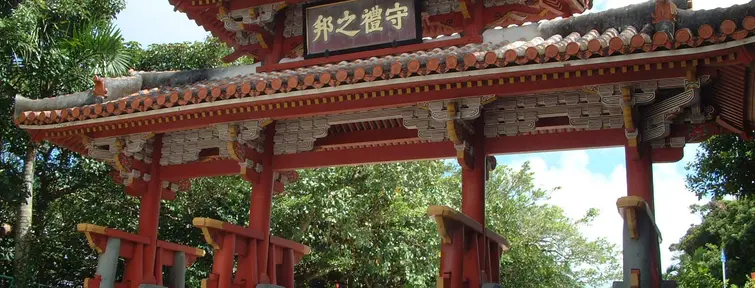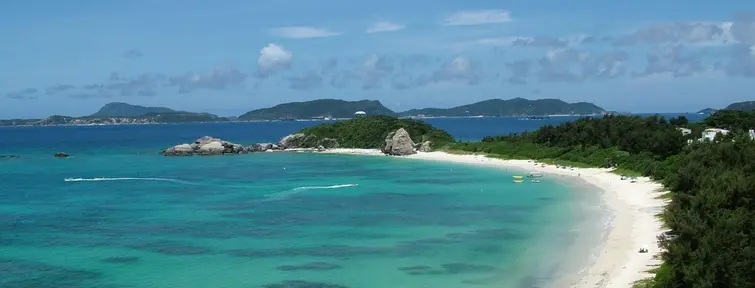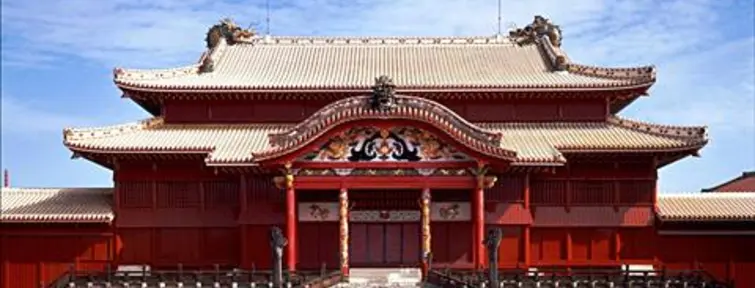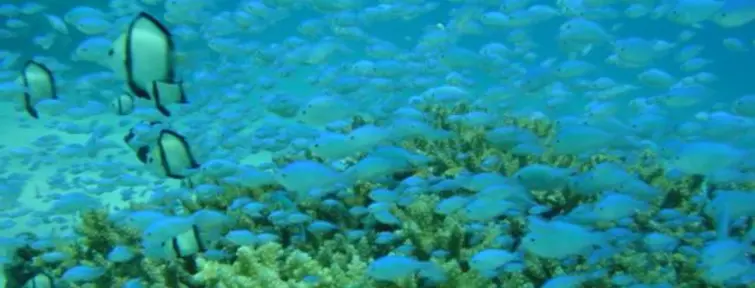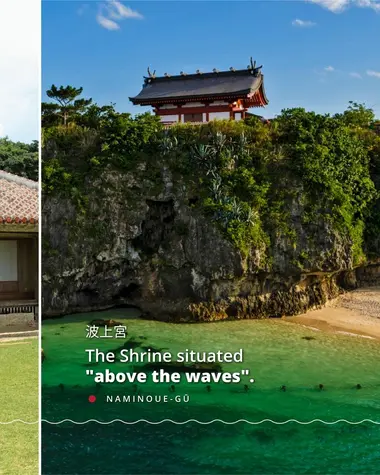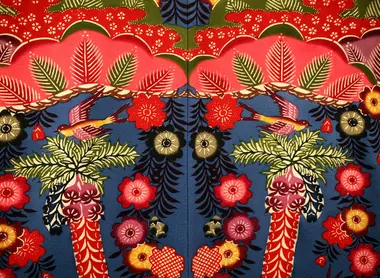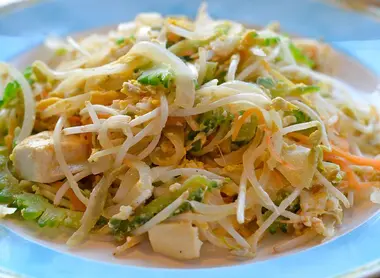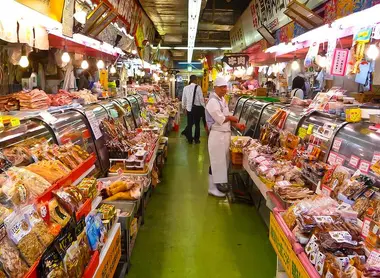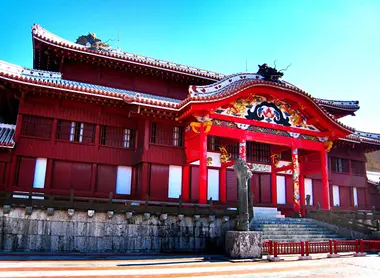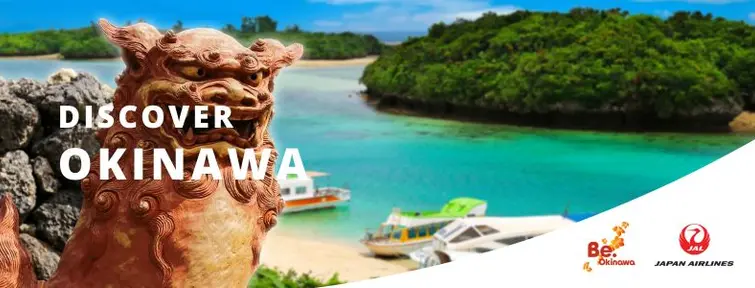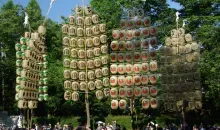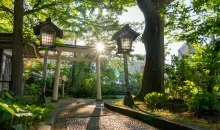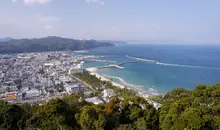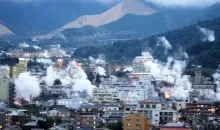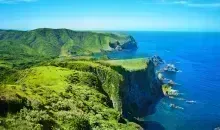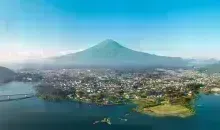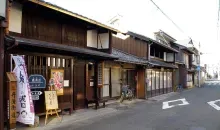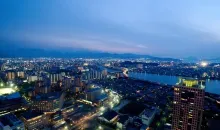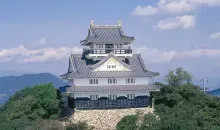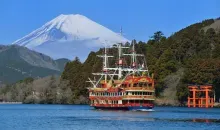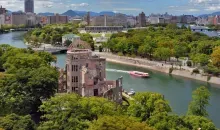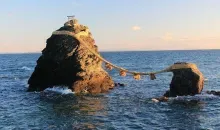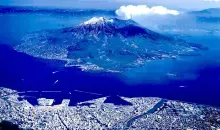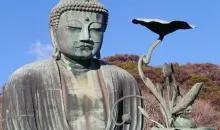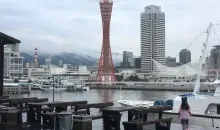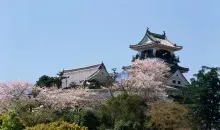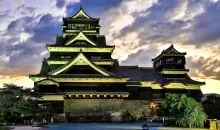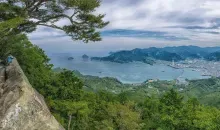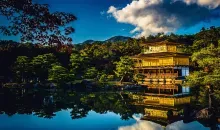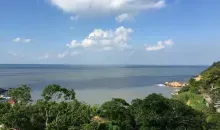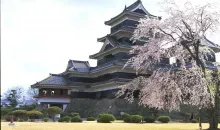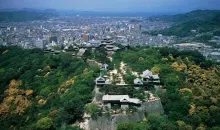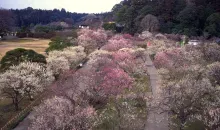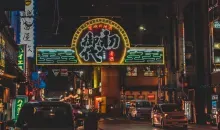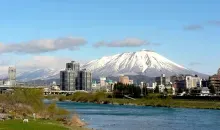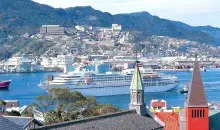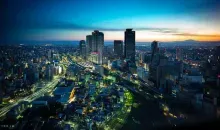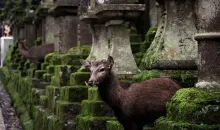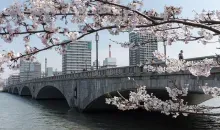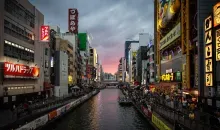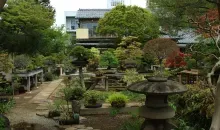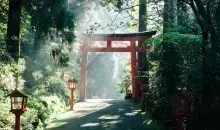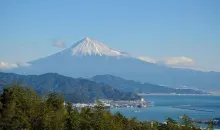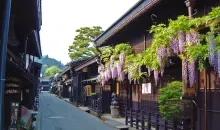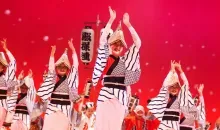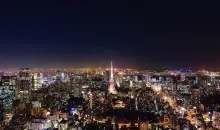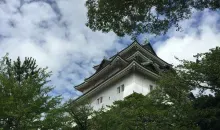Okinawa 沖縄
Local Time 16:21
Symbol : sunny_cloudy
Temp : 22.5°C
Date : Today
Symbol : cloudy_rainy
Temp : 22.9°C
Date : Tomorrow
Symbol : cloudy_rainy
Temp : 22.4°C
Date : Monday
Symbol : cloudy
Temp : 23.2°C
Date : Tuesday
Local Time 16:21
Symbol : sunny_cloudy
Temp : 22.5°C
Date : Today
Symbol : cloudy_rainy
Temp : 22.9°C
Date : Tomorrow
Symbol : cloudy_rainy
Temp : 22.4°C
Date : Monday
Symbol : cloudy
Temp : 23.2°C
Date : Tuesday
What is there to do and see in Okinawa?
Far from the bustle of Japanese cities, on the shores of the pacific ocean with its many shades of blue, in the middle of a beautiful natural setting and a rich and unique culture: a trip to the Okinawa islands is a magical interlude in the tropical Japanese waters. Discover Okinawa.
The history of Okinawa: from the Kingdom of Ryûkyû to life after the Second World War
Okinawa was firstly and for many years called the Ryukyu Islands. These consisted of independent islands that did not belong to Japan and had their own individual cultures and dialects.
After centuries of battles between the various local lords, the islands were unified in 1429 and became the Ryukyu Kingdom. It was prosperous thanks to the commercial and cultural relations it maintained with China. The Ryukyu Islands were also important due to their strategic positions for maritime traffic between Japan, China and Luzon (which is now part of the Philippines). They also maintained relations with the kingdom of Siam (now Thailand). Regular visits from envoys of the Chinese empire helped to ensure that the kingdom of Ryukyu was home to a unique culture where a wide range of shows and entertainment multiplied.
This period of prosperity came to an end in 1606 when the kingdom of Ryukyu was placed under the control of the region of Satsuma (now Kagoshima, on the island of Kyushu). In 1875, during the Meiji Era (1868-1912), the Ryukyu Kingdom was abolished, imperial Japan annexed the islands and Okinawa became one of Japan's prefectures.
A little under half a century later, violent combat took place on the islands between Japanese and Allied forces during the Second World War and the local civilian population suffered greatly. At the end of 1945, it was the turn of the United States to take control of Okinawa, and it was only returned to Japanese control on 15 May 1972. There are still important American military bases on the main island (Okinawa honto).
The tropics in Japan: Paradise islands and subtropical climate
The Okinawa islands extends for approximately 400km from north to south, for 1,000km from east to west and covers 2,281km2 of land. It is surrounded by the East China Sea and the Pacific Ocean and contains 160 islands, of which only 49 are inhabited. The population is around 1.44 million (as of May 2018), with the majority being based on the main island, Okinawa honto.
Okinawa enjoys a subtropical climate and does not have a cold season. With an average temperature of 17℃, January is the coldest month and July is the hottest with an average of around 29 ℃. It is in Okinawa that the first cherry trees blossom, the kanhizakura, a variety specific to the region.
Okinawa receives a lot of rain between May and June, the rainy season. It is also located in the typhoon zone, with typhoons generally occurring from June to September-October.
Discover Okinawa's traditional culture
Due to their history, the islands of the former kingdom of Ryukyu have a rich and unique culture. Despite the disappearance of the kingdom of Ryukyu and the annexation of the area by Japan, the typical traditional arts of Okinawa, created in most cases to entertain envoys from the imperial court of China who were received by the kingdom, have not disappeared and have been handed down from generation to generation. Among these are:
- The Kumiodori dance. Listed by UNESCO as an element of Intangible Cultural Heritage in 2010. This is a display of dancing that dates from the 18th century and is based on the legends of Ryukyu including elements of classical Japanese theatre (noh and kyogen). Dancing, singing, traditional Ryukyu music and tales (told in local dialects) make up this form of entertainment.
- The Ryukyu dances. These are divided into two categories: Zo-udui, which evokes the daily life of islanders and is performed by modern dancers, and ethnic dances, which are more ancient. Before the Meiji Era, only men were allowed to participate in these dances.
- Ryukyu classical music. This dates from the period of the kingdom of Ryukyu and it features in Kumiodori and Ryukyu dancing displays. The main instrument is the sanshin (literally meaning "three strings"), a stringed instrument designed to be plucked, which is typical of Okinawa. It is accompanied by the harp and Japanese flutes, drums and the Chinese violin (erhu).
- Folk songs. These are also accompanied by the sanshin and accompany the eisa folk dance, a very popular dance.
The rich and varied traditional Okinawan crafts
- Bashofu: Okinawa is known for is artisanal weaving using thread produced from fibrous plants called bashofu (from the name of the type of banana plant, basho, that supplies these fibers). This ancestral craft has been designated as an important piece of Japan's intangible cultural heritage.
- Bingata: a cloth decorated using a stencil. The patterns are taken from Ryukyu culture and the landscapes of the islands.
- Okinawan pottery: the traditional pottery of Okinawa developed thanks to exchanges with China and Korea. The Tsuboya-yaki style is typical of the Ryukyu islands. The village of Yomitan is famous for its production of pottery.
- Ryukyu glassware: It was during the Meiji Era when Japan annexed the islands that glass production began. The colored glass so typical of Okinawa dates from after the Second World War when local artisans collected the fruit juice and Coca-Cola bottles thrown away by American soldiers to make glassware.
Okinawan cuisine
Is it said that the Okinawa diet promotes a long life expectancy? Rich in vitamins, Okinawa cuisine is varied and delicious, featuring plenty of seafood.
It consists of a clever mixture of several influences, as shown by its best-known dish champuru, made using fried vegetables. Okinawa resembles its cuisine, halfway between Japan and Ryukyu culture.
- To read also: Culinary specialties of Okinawa
The different islands of the Okinawa archipelago
The widely scattered islands of the archipelago constitute a genuine natural treasure and include several sites listed by UNESCO. It is divided into three separate archipelagos: the Okinawa Islands (Okinawa Shoto) and some twenty islands and islets located around Okinawa Honto, the main island. Further south are the islands of Miyako and Yaeyama.
Okinawa, the little Hawaii
With a surface area of 1,206km2, the main island of Okinawa, honto, is the fifth biggest island in Japan. It has 476 kilometers of coastline. Its capital, Naha, is the political and economic hub of the prefecture. The main attractions are also located on the island and in Naha. Historical sites, such as the Shuri Castle, the ruins of Nagagusuku Castle and the former HQ of the Imperial Japanese Navy.
The American presence is still strongly felt around the base in the American village. All of the leisure activities worthy of a little Hawaii can be found there, including cocktails.
Note: Shuri Castle, a jewel of the Ryukyu Kingdom, was largely destroyed by a severe fire during the night of 30 to 31 October 2019. The park surrounding it has been partially reopened, but we recommend that you check before heading to the site.
Visiting Okinawa by car is a real pleasure and allows you to explore the island thoroughly. Far from the Americanised capital, you can admire the countryside, explore a small deserted beach, try the local specialties in a tavern and meet some of the Okinawans who are so friendly and cheerful…
And for a full guide to the sights and activities on the island of Okinawa, visit our pages:
Miyako, the white sand beaches
The eight small Miyako islands at the center of the Okinawa islands are famous for their white sand and turquoise waters. These are genuine Pacific beaches with their coral reefs. You can go scuba diving or free diving and there are plenty of other activities to enjoy in the sunshine. The beaches of Maehama and Yoshino are considered to be among the finest in Japan.
The largest of the islands in this archipelago, Miyako-jima, is well-known for being home to a community of female shamans who oversee funerals and certain religious festivals.
Yaeyama, untamed beauty and Ryukyu culture
The most distant islands make up the Yaeyama group, which will be of interest to nature lovers and those interested in traditional culture. The biggest of these islands is that of Ishigaki-jima. The island of Iriomote, which is fully protected, is famous throughout Japan for its jungle and its wild cats. Similarly, the island of Taketomi has the best-preserved traditional villages in Okinawa. Visits take place in carts pulled by water buffalo.
How to travel to Okinawa?
The most convenient way to get to Okinawa is by air. This is particularly true with the airline JAL, which offers several routes to and within the archipelago, at reduced prices with its JAL Japan Explorer Pass. Through the various airlines, three to eight direct flights a day serve Naha airport from Japan's main cities (Tokyo, Osaka, Fukuoka...). Expect a flight time of between 2h00 and 2h30. Low-cost airlines also offer flights.
Direct flights connect the islands of Miyako and Ishigaki with Tokyo and Osaka (3h00 to 3h30 flight time).
You can get around the islands by bus or bicycle, or rent a car on the main island.
Ferries link the smaller islands in a group, but air travel is preferred between Okinawa, Miyako and Yaeyama. Allow around 30 minutes for the flight between these islands.
The JAL Japan Explorer Pass, the perfect way to travel to Okinawa
JAL (Japan Airlines) has introduced a pass for travelers taking several flights within Japan, a situation that is ideally suited to a trip to Okinawa (round-trip to the archipelago, and any domestic flights between the various Okinawa islands). By booking your flights with the pass, you benefit from a reduced price on the total number of flights. JAL also offers all the comforts of a national airline, with a new, more comfortable economy class and free WiFi on board. Find out more about the JAL Japan Explorer Pass here!
Interested by Okinawa
Discover other cities to explore
